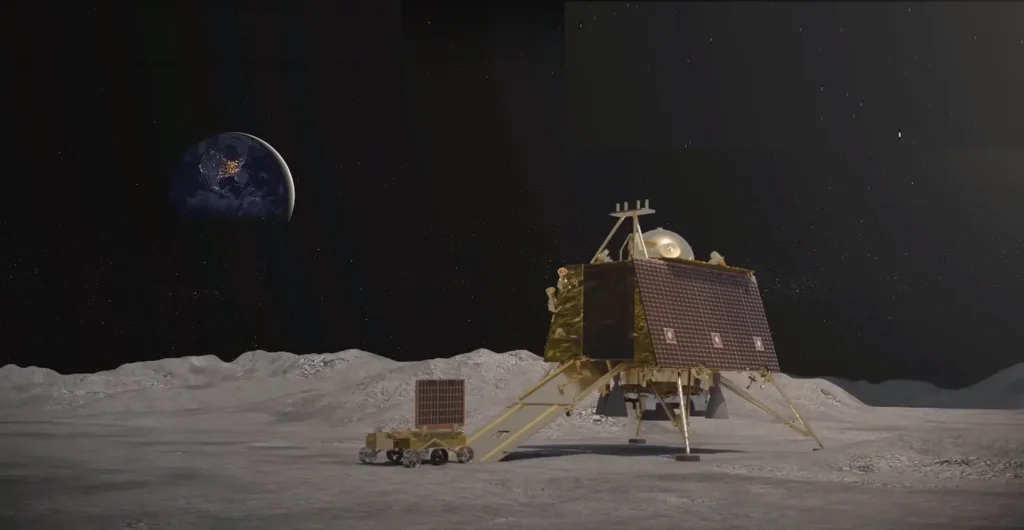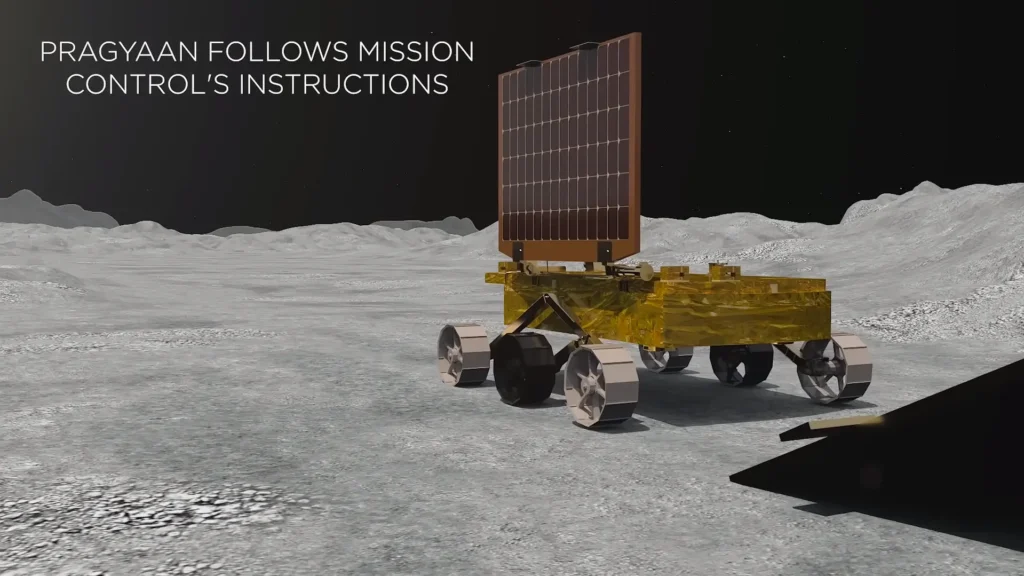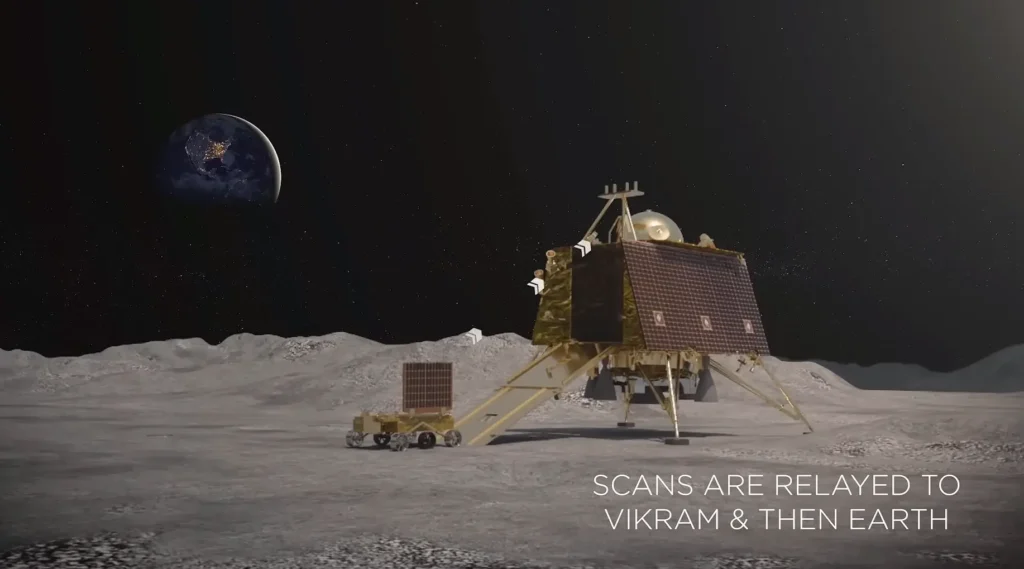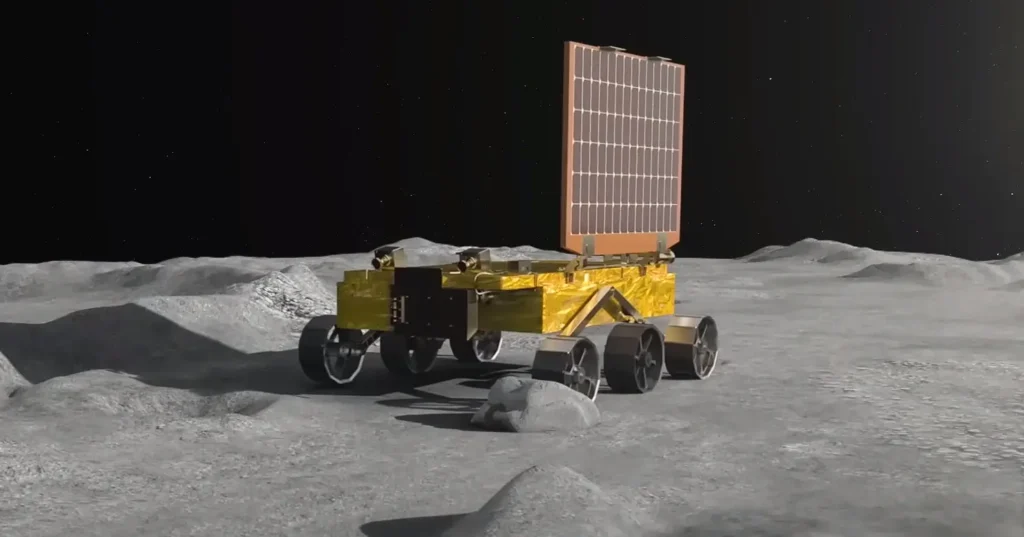Introduction

The Pragyan Rover, a key component of India’s Mars exploration efforts, represents a significant leap in space technology for the nation. This article explores the rover’s mission, its scientific objectives, technological specifications, and its broader implications for space exploration.
Mission Overview

Launched by the Indian Space Research Organisation (ISRO), it aims to explore the Martian surface, conducting scientific experiments and gathering valuable data. Scheduled to land in the southern hemisphere of Mars, this mission is part of India’s ambitious space program aimed at expanding our understanding of the Red Planet.
Rover Specifications

Standing at (36 inch) height , it weighs approximately 27 Kg (60 lb.) and operates on 50 Watts (Solar Panel). Its energy-efficient design allows it to navigate Martian terrain for extended periods, supporting continuous data collection and transmission.
Landing Site
The selection of the landing site involves meticulous evaluation of Martian geography and mineral composition. The chosen site offers unique geological features that promise to provide valuable insights into Mars’ history and evolution.
Mobility System
This rover features a six-wheeled mobility system designed for lunar exploration. Each wheel is independently powered for precise control over the Moon’s rugged terrain. It includes a robust suspension system to absorb shocks and maintain stability. Advanced navigation using stereoscopic cameras and hazard avoidance systems allows autonomous operation. Solar panels power the rover, charging its batteries for sustained operations. Controlled from Earth, it balances autonomy with teleoperation for scientific exploration. Built to endure lunar conditions, Pragyan Rover exemplifies India’s capability in space exploration, contributing to our understanding of the Moon’s surface and scientific research endeavors.
Communication Systems

Pragyan Rover communicates via high-gain antennas for data transmission to Earth and receiving commands from the lunar orbiter. It utilizes established protocols for reliable uplink and downlink operations. Powered by solar panels, the rover ensures continuous communication during lunar days and nights. Mission control at ISRO manages commands and monitors rover activities through telemetry, optimizing its scientific mission on the Moon’s surface.
Environmental Challenges

The Rover faces several environmental challenges on the Moon, including extreme temperature variations from -173°C during lunar nights to +127°C in sunlight. The lunar surface’s abrasive regolith poses risks to its mobility and equipment. Low gravity affects movement and stability. Communication can be disrupted by lunar terrain and the need to maintain line-of-sight with Earth or the orbiter. These challenges necessitate robust design and operational strategies to ensure the rover’s functionality and mission success on the lunar surface.
Scientific Goals
Rover’s scientific goals include analyzing lunar soil composition to understand the Moon’s geological evolution and its resource potential. It aims to study lunar surface elements and minerals using its onboard instruments. The rover will measure lunar regolith characteristics, including density and thermal conductivity, to enhance our understanding of lunar geophysics. Additionally, Pragyan will investigate the presence of water molecules on the Moon’s surface, contributing to broader lunar exploration objectives and future space missions.
Collaboration and Partnerships
Budget and Fundings
Future Mission of Pragyan Rover
Future missions involving Pragyan Rover could potentially focus on expanding lunar exploration capabilities. These missions may include:
- Extended Lunar Exploration: It could continue to explore new regions of the Moon, conducting detailed geological surveys and analyzing different types of lunar terrain.
- Sample Return Missions: Collaborative efforts with other space agencies might involve collecting and returning lunar samples to Earth for detailed analysis, enhancing our understanding of the Moon’s composition and history.
- Technology Demonstrations: Future missions may aim to demonstrate advanced technologies, such as enhanced mobility systems, autonomous navigation capabilities, or new scientific instruments onboard the Rover.
- International Collaborations: ISRO could collaborate with other space agencies for joint missions, pooling resources and expertise to achieve broader scientific goals in lunar exploration.
- Resource Prospecting: It might be involved in prospecting for lunar resources, such as water ice or minerals, which could support future human missions and sustainable lunar exploration.
These future missions of Pragyan Rover signify India’s commitment to advancing space exploration capabilities and contributing to global scientific endeavors on the Moon.
Conclusion
In conclusion, the Pragyan Rover mission marks a milestone in India’s space exploration journey, demonstrating technological prowess and scientific ambition. As humanity looks towards the stars, missions like Pragyan pave the way for future discoveries and innovations in space exploration.
Related Posts:
James Webb Space Telescope: Revolutionizing Our Understanding of the Universe.
Tech Related Posts:
Artificial Intelligence Chatbots: Revolutionizing Customer Interaction.
Meta AI on WhatsApp – Latest Advancement by WhatsApp.
Frequently Asked Questions:
Pragyan Rover is India’s first lunar rover, developed by the Indian Space Research Organisation (ISRO). It forms a crucial part of the Chandrayaan-2 mission, aiming to explore the lunar surface in unprecedented detail.
The primary objective of Pragyan Rover is to enhance our understanding of the Moon’s composition and geology. Equipped with advanced scientific instruments, it will analyze the lunar soil and send valuable data back to Earth.
Pragyan Rover, along with the Chandrayaan-2 spacecraft, was launched on July 22, 2019, from the Satish Dhawan Space Centre in Sriharikota, India. It embarked on its journey to the Moon to carry out scientific experiments on its surface.
Pragyan Rover operates autonomously once deployed on the lunar surface. It is powered by solar panels and communicates with the Chandrayaan-2 orbiter, which orbits the Moon and acts as a relay station for transmitting data back to Earth.
Pragyan Rover is equipped with state-of-the-art instruments designed to analyze the lunar surface. These include the Laser Induced Breakdown Spectroscope (LIBS), which identifies elements present in the soil, and the Alpha Particle X-ray Spectrometer (APXS), which measures the abundance of elements.
Since its successful landing on the lunar surface, Pragyan Rover has conducted initial tests and sent back significant data. This data is crucial for scientists to understand the Moon’s evolution, its mineralogy, and its potential resources.
Pragyan Rover is designed to operate for one lunar day, equivalent to about 14 Earth days. During this period, it will perform experiments and gather as much data as possible before the lunar night sets in, where temperatures drop drastically.
ISRO may consider extending Pragyan Rover’s mission duration or exploring collaborations with international space agencies for future lunar missions. Additionally, advancements in technology could lead to the development of more sophisticated rovers for deeper exploration.
Pragyan Rover plays a significant role in advancing our knowledge of the Moon and its potential for future human exploration. By studying its surface and resources, Pragyan provides essential insights that could aid in planning sustainable lunar missions.
For the latest updates on Pragyan Rover’s mission, including its findings and operational status, you can visit the official ISRO website (www.isro.gov.in), follow ISRO’s social media channels, or refer to reputable space news websites covering lunar exploration missions. These sources provide real-time information and insights into the rover’s ongoing contributions to space science.
